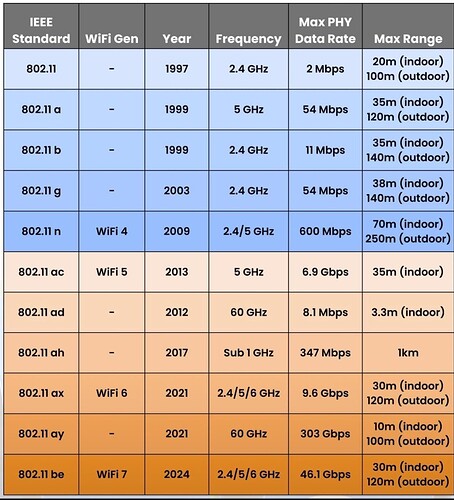A quick review on WiFi Standards. We’ve come a long way quickly — is wireless the way to go in every case? Does it still make sense to employ structured cabling in homes or offices? Especially given all that WiFi can do speed-wise.
There is still certainly a solid benefit to structured cabling – wireless isn’t perfect for all use-cases, and for certain construction techniques cabling is very necessary – but for 99% of consumers at home, WiFi really can solve most problems, especially when mixed with Meshed Systems and distributed APs.
Here’s a concise comparison of Wi-Fi 6, 6E, and 7:
-
Wi-Fi 6 2.4 GHz & 5 GHz ~9.6 Gbps OFDMA, MU-MIMO, TWT for better efficiency and device handling
-
Wi-Fi 6E 2.4 GHz, 5 GHz & 6 GHz ~9.6 Gbps OFDMA, MU-MIMO, TWT plus access to 6 GHz for more bandwidth
-
Wi-Fi 7 2.4 GHz, 5 GHz & 6 GHz ~46 Gbps Wider channels (up to 320 MHz), 4K-QAM, Multi-Link Operation (MLO)
Wi-Fi 7 is a major leap in speed and efficiency, especially for high-density or latency-sensitive applications.
LinkedIn: ![]()
